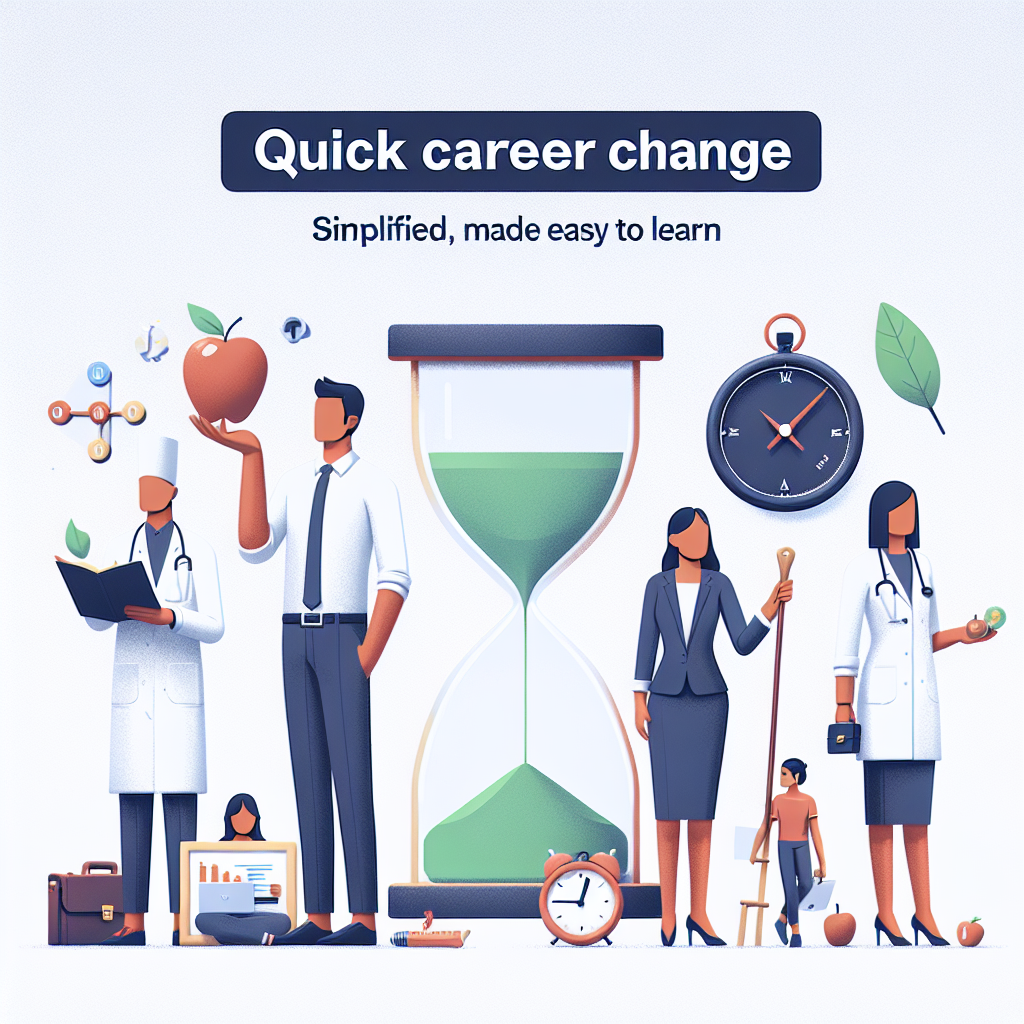Changing careers can feel overwhelming, but clear steps make it manageable. Quickest Career Change Simplified: Easy Steps To Learn is a practical approach that breaks the process into focused actions—assess, learn, practice, and network—so you can move from idea to interview-ready faster. This guide gives straightforward methods to pick transferable skills, choose fast learning paths, and present your experience to employers with confidence.
Start with a focused skills inventory
Before investing time in courses, map what you already know. List technical skills, soft skills, and accomplishments from your past roles. Identify which of these can transfer to target roles—project management, client communication, data literacy, and problem-solving are commonly portable. Prioritizing transferable skills helps you choose short courses or certifications that fill specific gaps instead of starting from scratch.
Choose fast, targeted learning paths
Not every career switch requires a degree. Micro-credentials, bootcamps, workshops, and certificate programs can build job-ready competencies quickly. Look for programs that include hands-on projects and a portfolio element so you can demonstrate ability immediately. For broader context on adult learning and lifelong skills development, see the UNESCO page on lifelong learning.
How to pick a course that accelerates hiring
- Match course outcomes to job postings—choose programs teaching tools and deliverables employers ask for.
- Prefer project-based courses that create tangible portfolio pieces.
- Check instructor industry experience and alumni hiring rates when possible.
Learn by doing: build a compact portfolio
Employers hire results. Convert new skills into short projects you can showcase: a simple website, a case study, a data dashboard, or a process-improvement plan. Keep projects concise and focused on outcomes—what you solved, how you measured success, and any results. Portfolios and GitHub repositories are effective for technical roles; slide decks or one-page case studies work well for business, marketing, and design roles.
Fast networking and informational interviews
Targeted outreach beats mass applications. Identify 10–15 professionals in your desired field—use LinkedIn, alumni networks, or local meetups—and ask for 15–20 minute informational interviews. Prepare a short agenda: a) what they enjoy about their role, b) skills most valued, and c) advice for someone transitioning quickly. These conversations often lead to referrals, which speed hiring more than cold applications.
For specific pathways and inspiration for late-career restarts, consider tailored resources like Starting fresh: new career paths for women at 50, which presents options and practical next steps for re-entering the workforce with confidence.
Polish your application materials for quick impact
When changing careers rapidly, your resume and cover letter must connect your past to the future role. Use a skills-based summary at the top of your resume, and craft bullet points that quantify outcomes. In cover letters, lead with a brief narrative: what you did, why you’re shifting, and one example that proves you can deliver value in the new role. Keep LinkedIn updated with your learning projects and recent achievements—hiring managers often check profiles before interviews.
Interview prep for career changers
- Prepare a concise pitch explaining why you switched and how your background benefits the employer.
- Have 3–5 project stories following the Situation-Action-Result format tailored to the new role’s competencies.
- Practice answering transferable-skill questions and be ready to discuss your quick-learning strategy.
Speed up progress with constraints and routines
Set tight, realistic timelines—4–8 weeks per learning sprint. Use time-boxed routines: daily practice sessions, weekly project milestones, and scheduled outreach. Constraints force prioritization and prevent scope creep. Track progress in a simple planner or spreadsheet to maintain momentum and to show measurable steps to mentors or potential employers.
- Define a 6-week learning sprint with one deliverable.
- Schedule three informational interviews per week.
- Create one portfolio item every sprint and add it to LinkedIn.
FAQ
Q: How long does a quick career change usually take?
A: With focused effort, targeted learning, and active networking, many people can move into entry-level roles or adjacent positions in 2–6 months. Complexity of the field and prior experience affect timelines.
Q: Do I need a formal degree to change careers fast?
A: Not usually. Many employers value demonstrable skills and project experience over degrees. Short courses, certificates, and portfolios can effectively show capability.
Q: How do I explain gaps or a career switch to employers?
A: Be honest and concise. Frame the change as intentional: highlight recent learning, relevant projects, and how your background provides unique advantages for the new role.



